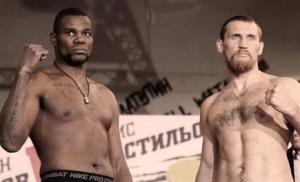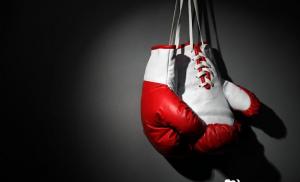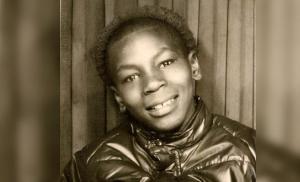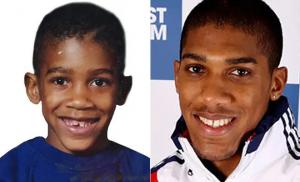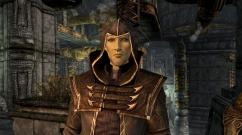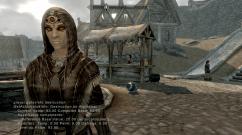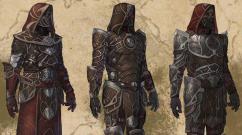Day of suppression of the putsch. Over the years, the secrets of the State Emergency Committee have been overgrown with a large number of versions
25 years ago, political events took place in the country that could not but leave a mark on the history of the state. In August 1991, the country experienced a coup d'état and seizure of power. NTV tells about what the August putsch is, how events developed then and what they led to.
Read below
Causes of the putsch
In 1991, some conservative statesmen from among the country's top leadership were dissatisfied with the policy of Soviet President Mikhail Gorbachev. They didn't like the leader's new course. It was they who formed the State Committee for the State of Emergency (GKChP). Their main goal was to prevent the collapse of the USSR and the signing of a new union treaty, creating a confederation instead of the USSR - the Union of Soviet Sovereign Republics (Union of Sovereign States), and the leaders of the organization wanted to immediately return to the previous pre-perestroika course.
The GKChP includes Defense Minister Dmitry Yazov, Interior Minister Boris Pugo, KGB head Vladimir Kryuchkov, Prime Minister Valentin Pavlov, First Deputy Chairman of the Defense Council Oleg Baklanov, Chairman of the Peasant Union Vasily Starodubtsev, President of the Association of State Enterprises and Industrial Facilities, Construction, Transport and communications Alexander Tizyakov. Thus, all the forces of the KGB, the Ministry of Internal Affairs and the army were on the side of the GKChP.
It must be said that despite the fact that the nominal head of the GKChP was Gennady Yanayev (formally, this organization had no leader at all), according to a number of experts, the “true soul” of the committee was Vladimir Kryuchkov. The leading role of Kryuchkov is also repeatedly mentioned in the materials of the official investigation conducted by the KGB of the USSR in September 1991.
Chronicle of events
In the morning August 19, 1991 KGB troops of the USSR controlled by the State Emergency Committee blocked Mikhail Gorbachev at his dacha in Crimea. By order of the Chief of Staff of the USSR Air Defense Forces, Colonel-General Igor Maltsev, two tractors blocked the runway, on which the flight facilities of the President of the country were located - the Tu-134 aircraft and the Mi-8 helicopter. A few hours later, it was announced on the radio that Mikhail Gorbachev was allegedly no longer able to fulfill the duties of the head of state for health reasons and that now all power, according to the union constitution, would be concentrated in the hands of the country's vice-president, Gennady Yanayev. They also reported about the very creation of the State Emergency Committee.
GKChP declared a state of emergency in the country. Tanks were brought into the capital, and Muscovites took to the streets.
In the evening August 19, 1991 members of the Emergency Committee held a press conference at which they behaved rather insecurely. Their opponents went to a rally on August 20. Meanwhile, part of the military went over to the side of the protesters.
Besides, August 20, 1991 in Novo-Ogaryov, representatives of the Belorussian SSR, Kazakh SSR, RSFSR, Tajik SSR and Uzbek SSR were to sign an agreement on the creation of the SSR, and in the fall the agreement was to be signed by the Azerbaijan SSR, Kirghiz SSR, Ukrainian SSR and Turkmen SSR. Boris Yeltsin insisted on signing this treaty as soon as possible. It was he who spoke out sharply against the entire organization of the Emergency Committee.
Then Yeltsin called the actions of the putschists illegal and, in order to organize resistance to them, arrived at the White House. Barricades were formed on the embankments of the Moskva River on the outskirts of the center of resistance.
On the night of August 20-21, 1991 an operation was planned to seize the White House. In this case, no one could guarantee the absence of a large number of victims. The tanks were supposed to start the assault. It was planned that they would fire frightening shots at close range and make passes through the rubble. Then the soldiers of the separate motorized rifle division named after Dzerzhinsky will wedge themselves into the ranks of the defenders, clear the way to the entrances of the White House and will hold the "corridors". Tula paratroopers were supposed to follow them, who, with the help of technology, would break open the doors and glazed openings in the walls, after which they would start a battle on the floors of the building. At this point, the Alpha fighters, acting on an independent plan, had to search and neutralize the leaders of the resistance inside the White House. For the operation, units with a total number of about 15 thousand people were allocated. However, the GKChP members did not issue such an ambiguous order to the troops under their control.
It should be noted that later some participants in the events of those days denied that such an assault was planned.

Photo: TASS / Gennady Khamelyanin
Defenders of the White House blocked the road with shifted trolleybuses. In addition, on the night of August 21, during an incident in a tunnel on the Garden Ring, three people were killed. They posthumously became Heroes of the Soviet Union "for courage and civic valor displayed in the defense of democracy and the constitutional order of the USSR."
After the military action did not take place, the withdrawal of troops from Moscow began. Some members of the Emergency Committee flew to Mikhail Gorbachev in Foros (Crimea), but he refused to accept them and demanded to restore communication with the outside world. At the same time, Yanaev signed a decree dissolving the State Emergency Committee.
August 22 Gorbachev returned to Moscow. Members of the dissolved GKChP - Kryuchkov, Yazov and Tizyakov - were arrested after arriving from Foros. Vice-President Gennady Yanaev was also detained in his office in the Kremlin and taken to the prosecutor's office. GKChP member Boris Pugo committed suicide by shooting himself with a pistol when he learned that a group had gone to him to arrest him.
The historical flag of Russia (tricolor), which later (in November 1991) became the state flag, was first installed at the top of the building of the House of Soviets. He became a kind of symbol of the victory over the State Emergency Committee.
August 24, 1991 In an office in one of the buildings of the Moscow Kremlin, the guard on duty found the body of Marshal of the Soviet Union Sergei Fedorovich Akhromeev, who was an adviser to the President of the USSR. According to the version of the investigation, the marshal committed suicide. Other putschists spent two years in prison, after which in 1994 they were amnestied and released.
On August 24, in connection with the participation of members of the Cabinet of Ministers of the USSR in the activities of the State Emergency Committee, the Council of Ministers of the RSFSR proposed to the President of the USSR Gorbachev to dissolve the union government and announced that he would assume the leadership of the ministries and departments of the USSR.
On the same day, Gorbachev resigned as General Secretary of the CPSU Central Committee and offered the Central Committee to dissolve.
August 29, 1991 The Supreme Soviet of the USSR suspends the activities of the CPSU throughout the USSR.
What happened after the putsch
An attempt by the State Emergency Committee to remove Gorbachev from power was defeated. By the time of the August putsch, the rapid collapse of the USSR was already irreversible. It should be noted that the putschists did not find wide support among the country's population, and after the events themselves, the authority of the CPSU was completely undermined. At the same time, the positions of Boris Yeltsin and his supporters strengthened.
Already at the end of December 1991, the Soviet Union ceased to exist. On December 25, 1991, the President of the USSR Mikhail Gorbachev announced the termination of his activity in this post "for reasons of principle", and on December 26, the Council of Republics of the Supreme Soviet of the USSR adopted a declaration on the termination of the existence of the USSR in connection with the formation of the Commonwealth of Independent States (CIS).
The August 1991 putsch: how it was
TASS-DOSSIER. On August 19-22, 1991, 25 years ago, an attempted coup d'état organized by members of the State Committee for the State of Emergency (GKChP) in the USSR took place in the Soviet Union.
The editorial staff of TASS-DOSSIER prepared a certificate on how the fate of the GKChP participants developed after August 1991.
GKChP members
The GKChP consisted of eight people. The head of the committee was the vice-president of the USSR, Gennady Yanayev, who assumed the powers of the president of the Soviet Union on August 19, 1991. Also members of the GKChP were USSR Prime Minister Valentin Pavlov, USSR Defense and Internal Affairs Ministers Dmitry Yazov and Boris Pugo, Chairman of the Union State Security Committee (KGB) Vladimir Kryuchkov, First Deputy Chairman of the USSR Defense Council Oleg Baklanov, Chairman of the USSR Peasant Union Vasily Starodubtsev, President of the Association of State Enterprises and Industrial Facilities, Construction, Transport and Communications of the USSR Alexander Tizyakov.
Arrests of GKChP participants
On August 21, 1991, the Prosecutor General of the RSFSR Valentin Stepankov issued an arrest warrant for all members of the State Emergency Committee. On August 22, the Presidium of the Supreme Soviet of the USSR issued a decision to detain Baklanov and Starodubtsev, who were People's Deputies of the Soviet Union.
On the same day, Yanaev, Kryuchkov, Yazov and Tizyakov were arrested. Pugo committed suicide. On August 23, the remaining members of the Emergency Committee were detained - Pavlov, Baklanov and Starodubtsev. All of them were placed in the Matrosskaya Tishina pre-trial detention center (SIZO) in Moscow. The members of the State Committee were charged under paragraph "a" of Art. 64 of the Criminal Code of the RSFSR ("Treason to the Motherland in order to seize power").
Release from arrest
On June 6, 1992, Starodubtsev was released from the pre-trial detention center for health reasons. On January 26, 1993, the remaining members of the State Emergency Committee were released on recognizance not to leave. On February 23, 1994, all of them were amnestied by the State Duma of the Russian Federation of the first convocation. On May 6, 1994, on the basis of a parliamentary decree "On the Declaration of Political and Economic Amnesty", the criminal case against members of the State Emergency Committee was terminated.
Gennady Yanaev
On September 4, 1991, he was removed from the post of vice-president of the USSR at the 5th Extraordinary Congress of People's Deputies of the USSR. After his release from the pre-trial detention center, he took part in the congresses and public events of the Communist Party. He was a consultant to the Committee of Veterans and Disabled People of the State Service "Homeland and Honor", and also headed the Fund for Assistance to Children with Disabilities from Childhood.
In 2002-2010 served as Head of the Department of Russian History and International Relations of the Russian International Academy of Tourism. He died on September 24, 2010 in Moscow after a long illness, was buried at the Troyekurovsky cemetery in the capital.
Valentin Pavlov
He was dismissed from the post of Prime Minister of the USSR by decree of Mikhail Gorbachev on August 22, 1991 (on August 28, this decision was approved by the Supreme Soviet of the USSR). In 1993, while in the "Matrosskaya Tishina" remand prison, he wrote the book "August from the Inside: Gorbachev-putsch".
In 1994 he headed his own consulting company "Doverie". 1994-1995 served as President of Chasprombank, in 1996-1997. was the chief financial adviser to the president of Promstroybank Yakov Dubenetsky.
Since 1998, he worked as vice president of the American firm Business Management Systems (specialized in computer technology). In the late 1990s. He was vice president of the Free Economic Society of Russia, headed the Institute for Research and Development of Regions and Industries at the International Union of Economists, was vice president of the International Academy of Management and chairman of its Academic Council.
In 2002 he suffered a heart attack. He died on March 30, 2003 after a massive stroke, and was buried in Moscow at the Pyatnitskoye cemetery.
Dmitry Yazov
On August 22, 1991, by decree of the President of the USSR, Mikhail Gorbachev, he was relieved of his post as Minister of Defense of the Soviet Union (on August 28, the decision was approved by the Supreme Soviet of the USSR). For a year and a half he did not receive a pension (issued in 1993), his son was expelled from the Academy of the General Staff of the Armed Forces of the Russian Federation. On February 7, 1994, by decree of the President of the Russian Federation Boris Yeltsin, Yazov was dismissed from military service.
Since 1998, he held the position of chief military adviser of the Main Directorate of International Military Cooperation of the RF Ministry of Defense, and was also the chief adviser-consultant to the head of the Academy of the General Staff of the RF Armed Forces. In 1999 he wrote his memoirs "Strikes of Fate: Memories of a Soldier and a Marshal". After the re-establishment of the Service of Inspectors General of the RF Ministry of Defense in 2008, he was its leading analyst (inspector general). He also headed the "Officers' Brotherhood" fund of the National Association of Associations of Reserve Officers of the Armed Forces (created in September 2001), the public organization "Committee in Memory of Marshal Zhukov".
Lives in Moscow.
Vladimir Kryuchkov
On August 22, 1991, by decree of the President of the USSR Mikhail Gorbachev, he was relieved of the post of Chairman of the KGB of the USSR. On October 4, 1994, he was dismissed from the state security agencies for retirement. Since the mid-1990s. - Member of the Board of Directors of the Joint Stock Company (JSC) Region, which is part of Vladimir Yevtushenkov's holding AFK Sistema.
According to media reports, the company was an information and analytical center within the holding. Also in the 1990-2000s. was an advisor to the Experimental Creative Center of the Russian political scientist Sergei Kurginyan.
In 1996, he wrote a two-volume memoir "Personal File". Since 1997, he was a member of the organizing committee of the Movement in Support of the Army, Defense Industry and Military Science, created by Lieutenant General Lev Rokhlin, deputy of the State Duma of the Russian Federation of the second convocation. The media also reported that in 1998-1999. Kryuchkov was an adviser to the director of the FSB of Russia, Vladimir Putin, but this information has not been officially confirmed. On May 7, 2000, he was invited to the inauguration of Russian President Vladimir Putin.
Oleg Baklanov
Since 1994, he has been a member of the governing bodies of the Russian National Union of Sergei Baburin. In 2004-2007, when Baburin was the deputy speaker of the Duma, Baklanov served as his adviser. He also worked as an advisor to the president of the joint-stock commercial bank Mir. In 2006, he owned 34% of shares in Zenit DB Limited Liability Company (wholesale). According to media reports, at the turn of the 2000-2010s. Was the chairman of the board of directors of OJSC "Corporation" Rosobschemash "(rocketry).
He headed the regional public organization "Society of Friendship and Cooperation of the Peoples of Russia and Ukraine". In 2004, during the presidential elections in Ukraine, he supported Viktor Yanukovych. Currently - Chairman of the Board of the International Union of Public Associations of Friendship and Cooperation with the CIS countries "Kievan Rus". Lives in Moscow. In 2012 he published a book of memoirs and diaries "Space is my destiny. Notes from" Matrosskaya Tishina ".
Vasily Starodubtsev
After his release from the pre-trial detention center, he returned to work as chairman of the agro-industrial complex "Novomoskovskoye" and the collective farm. IN AND. Lenin (Tula region), which he headed before his arrest. In February 1993, he became a co-founder of the Agrarian Party of Russia, and later became a member of its governing bodies. On December 12, 1993, he was elected a deputy of the Federation Council of the Russian Federation of the first convocation (in force until 1995), was a member of the committee on agrarian policy. Since June 1994, by order of the government, he was included in the board of the Ministry of Agriculture and Food of the Russian Federation.
On January 22, 1995 he became a member of the Central Committee of the Communist Party of the Russian Federation. On March 23, 1997 he was elected governor of the Tula region. (62.82% of the votes), re-elected in 2001. He held this post until April 29, 2005. In December 1995, at the elections to the State Duma, he was in the top three of the federal list of the Agrarian Party of Russia, did not pass to the Duma (the party did not overcome 5 percent barrier). 2007-2011 - Deputy of the State Duma of the fifth convocation. He was elected on the list of the Communist Party of the Russian Federation from the Tula region, was a member of the faction of the same name, was a member of the State Duma committee on agrarian issues.
At various times, he also headed public organizations of agricultural producers: the Agrarian and Agroindustrial Union of Russia, the Peasant Union of the CIS. On December 4, 2011, he was re-elected to parliament on the list of the Communist Party of the Russian Federation. On December 30 of the same year, he died suddenly in Novomoskovsk. Buried in the village of Spasskoye, Novomoskovsky district, Tula region.
Alexander Tizyakov
In December 1995, at the elections to the State Duma of the second convocation, he nominated himself from the electoral bloc "Union of Patriots" (it included the Russian National Cathedral of Alexander Sterligov and the All-Russian Officers' Assembly of Vladislav Achalov). The block did not break the 5 percent barrier. In 2003 he ran for parliament from the Communist Party of the Russian Federation, took the 14th place in the Ural regional group. When distributing deputy mandates to the Duma did not pass.
He was also engaged in entrepreneurial activities. According to SPARK-Interfax, he was a co-founder of a number of companies in the Sverdlovsk region: Antal LLC (wholesale trade in industrial equipment), Insurance company Severnaya Kazna LLC, Vidikon LLC (chipboard production), Fideliti LLC (production of consumer goods), etc.
At present, he is a co-owner (45%) of Science 93 LLC. The main type of its activity is indicated as "leasing its own non-residential real estate". Lives in Yekaterinburg. He is a member of the Communist Party of the Russian Federation, was the chairman of the Yekaterinburg regional public movement "In support of the army and defense power of the Russian Federation."
Chronology
- 1991, 19 - 21 August Anti-state putsch in Moscow
- 1991, December 8 Belovezhsky agreement of the leaderships of Russia, Ukraine and Belarus on the dissolution of the USSR
- 1991, December 25 Resignation of M.S. Gorbachev from the post of President of the USSR
- 1992, January The beginning of a radical economic reform in Russia
August 1991 GKChP. August putsch
An acute crisis of confidence in Gorbachev, his inability to effectively lead the country and control the socio-political situation was also manifested in his defeats in the fight against political opponents both "on the right" and "on the left."
On August 5, 1991, after Gorbachev left for Crimea, conservative leaders began to prepare a conspiracy aimed at suppressing reforms, restoring the full power of the center and the Communist Party of the Soviet Union.
Putsch started on 19 August and continued three days... On the first day, the documents of the leaders of the coup d'etat were announced. Vice President of the USSR G. Yanaev in a decree issued on his behalf, announced his entry into the "performance of the duties of the President of the USSR" "in connection with the impossibility for health reasons of Mikhail Sergeyevich Gorbachev performing his duties." The "Statement of the Soviet leadership" announced the formation of State Committee for the State of Emergency composed of: O.D. Baklanov - First Deputy Chairman of the USSR Defense Council; V.A. Kryuchkov - Chairman of the KGB of the USSR; V.S. Pavlov - Prime Minister of the USSR; B.K. Pugo - Minister of Internal Affairs of the USSR; A.I. Tizyakov - President of the Association of State Enterprises and Industrial Facilities, Construction, Transport and Communications of the USSR; G.I. Yanaev - acting President of the USSR. The names of the GKChP participants were listed in alphabetical order, its formal leader G. Yanaev was listed at the end of the list.
The Emergency Committee issued an appeal to the Soviet people, in which it was reported that Gorbachev's perestroika collapsed that, taking advantage of the freedoms granted, extremist forces arose, embarking on a course towards the elimination of the Soviet Union, the collapse of the state and the seizure of power at any cost. Resolution No. 1, adopted by the State Emergency Committee, as a way out of the crisis, banned the activities of power and government structures not legalized by the Constitution of the USSR, suspended the activities of political parties, movements, associations, opposition CPSU, as well as the publication of disloyal newspapers, and restored censorship. The power structures were supposed to support the state of emergency.
August 19 by decision GKChP to Moscow troops were brought in... The center of resistance to the putschists became the leadership of Russia, headed by the President of the RSFSR B.N. Yeltsin. He made an appeal "To the Citizens of Russia" and issued a decree, which spoke of the transfer of all executive bodies of the USSR to the direct subordination of the President of Russia. The White House, in which the Russian government is located, was able to immediately begin organizing resistance to the putsch.
August 19, 1991 at the White HouseThe outcome of the confrontation between the Emergency Committee and the Russian authorities was decided August 20 when B.N. Yeltsin and his entourage were able to turn the tide of events in their favor and took control of the situation in Moscow. On August 21, GKChP members were arrested. M.S. also returned to Moscow. Gorbachev. On August 23, during a meeting with deputies of the Supreme Soviet of the RSFSR, he was asked to immediately sign a decree on dissolution of the CPSU... The President of the USSR accepted this and other ultimatums. The next day he dismissed the Union Cabinet of Ministers, resigned from the post of Secretary General Central Committee of the CPSU. Central Committee of the CPSU announced the dissolution... As a result, not only the communist regime fell, but also collapsed state-party structures cementing the USSR.
The disintegration of all other state structures began: the Congress of People's Deputies of the USSR was dissolved, and for a transitional period until the conclusion of a new union treaty between the republics, the Supreme Soviet of the USSR became the highest representative body of power; instead of the cabinet of ministers, a powerless inter-republican economic committee was created, most of the union ministries were liquidated. The Baltic republics, which had been striving for independence for two years, received it. Other republics passed laws that strengthened their sovereignty and made them virtually beyond Moscow's control.
Collage © site
In the quarter of a century that has passed since the attempted coup d'état of 1991, Russia has gone through many trials, having experienced a series of glorious victories and sorrowful defeats.
Perhaps, due to the excessive eventfulness of these years, what happened in Moscow from August 19 to 22, 1991 has faded and was erased from the memory of many compatriots. In history textbooks, these events are given only a few paragraphs, and the younger generation, born a few years later, has a rather vague idea about them.
Today, on the anniversary of the suppression of the August 1991 putsch, it is not out of place to refresh the memory of the events of those days, and at the same time try to give them a new assessment, this time from the “height” of the past 25 years.

Who were they?
For those who do not know, do not remember, or were still too young in August 1991, let us briefly recall what the putsch was and what was happening these days in the capital of the USSR and not only in it.
The August putsch of 1991 is an attempt at a coup d'état aimed at removing the first and last president of the USSR, Mikhail Gorbachev, from power, as well as changing his course. According to the coup plotters, from August 19, 1991, power in the country was to temporarily pass into the hands of the self-proclaimed State Committee for a State of Emergency (GKChP).
The GKChP includes: Vice-President of the USSR Gennady Yanayev, Prime Minister of the USSR Valentin Pavlov, Minister of Internal Affairs of the USSR Boris Pugo, Minister of Defense of the USSR Dmitry Yazov, Chairman of the KGB of the USSR Vladimir Kryuchkov, First Deputy Chairman of the Council of Defense of the USSR Oleg Baklanov, Chairman of the Peasant Union of the USSR Vasily Starodubtsev, President of the Association of State Enterprises and Industrial Facilities, Construction, Transport and Communications of the USSR Alexander Tizyakov.
For most of their contemporaries, these names mean little, but in those years they sounded all over the country from the screens of state television and were regarded by the population as the color of the party and power elite.

How it was?
17 august 1991 at the secret facility of the KGB of the USSR, a meeting of future members of the State Emergency Committee took place. It was there that the plot of the putsch was developed, which implied the introduction of a state of emergency on August 19 and the requirement for Gorbachev to sign the relevant decrees or simply resign. According to the conspirators, the head of the USSR was supposed to transfer presidential powers to Vice President Gennady Yanayev. The head of the RSFSR Boris Yeltsin, who was gaining political strength, was supposed to be detained at the Chkalovsky airfield upon his return from Kazakhstan.
August 18 representatives of the State Emergency Committee went to Foros (Crimea), where President of the USSR Mikhail Gorbachev was on vacation. The putschists hoped to get his consent to declare a state of emergency, but Gorbachev refused to give it.
Left with nothing, the State Emergency Committee cut off all channels of presidential communication, including the line providing control of the strategic nuclear forces of the USSR. The presidential residence in Foros was completely blocked by the Sevastopol regiment of the KGB troops of the USSR.
August 19 at 06:00 on radio and television, the now famous message was broadcast about the introduction of a state of emergency in some regions of the USSR, the creation of the State Emergency Committee, the decree of the Vice-President of the USSR Gennady Yanayev on his assumption of the duties of president in connection with the "illness" of Mikhail Gorbachev, and GKChP's appeal to the Soviet people. Instead of the usual schedule of programs, music sounded on all channels of the Central Television and a ballet was broadcast, only occasionally the broadcast was interrupted by a repetition of the GKChP's appeal.
At about 7 a.m., by order of the Minister of Defense Yazov, the second motorized rifle Taman division, the fourth tank Kantemirovsk division, as well as the 51st, 137th and 331st paratrooper regiments moved towards Moscow.

By 10 o'clock, the troops arrived in the capital took up positions in the center of the city. Directly near the White House (House of Soviets of the RSFSR), a battalion of the Tula Airborne Division under the command of Major General Alexander Lebed, as well as armored vehicles of the Taman Division, are located.
In parallel with this, citizens began to gather in different parts of the center of Moscow, protesting against the imposition of a state of emergency.
Boris Yeltsin, accompanied by his supporters, arrived at the White House at 9 o'clock in the morning. During a telephone conversation with Kryuchkov, he refused to recognize the State Emergency Committee.
Meanwhile, a crowd of thousands began to gather around the White House. Barricades began to be erected from the materials at hand - mainly various metal rubbish and construction waste collected in the surrounding yards.
Thousands of rallies against the Emergency Committee were held in Leningrad, Gorky, Sverdlovsk, Novosibirsk, Tyumen and other cities of the USSR.
The meeting of the Leningrad City Council decided to refuse to recognize the State Emergency Committee and not to impose a state of emergency.
After 3 pm, the troops brought into the capital began to go over to the side of the opponents of the putschists. So, the tank company of Major Evdokimov with six tanks (without ammunition) defended the White House.
At 5 pm, Yeltsin issued Decree No. 61, reassigning the federal executive authorities and security forces to the President of the RSFSR. At the same time, a press conference of the State Emergency Committee was held at the press center of the Ministry of Foreign Affairs, at which Yanaev said that Gorbachev was "on vacation and treatment in Crimea."
August 20 Throughout the day in Leningrad and other cities, thousands of rallies against the State Emergency Committee continued. The Vitebsk division of the Airborne Forces of the KGB of the USSR and the Pskov division of the Ministry of Defense of the USSR did not enter the city, stopping 70 km from it. On the same day, a provisional republican Ministry of Defense was created in the RSFSR, headed by Konstantin Kobets. At that time, it finally became clear that the army did not intend to support the Emergency Committee. By evening, part of the military units moved from Moscow to their places of permanent deployment.
The only three victims of the August putsch are connected with the withdrawal of troops and equipment. On the night of August 21, the protesters, who had no information that the vehicles were being withdrawn from the city, tried to block the BMP convoy in the tunnel at the intersection of Kalininsky Prospekt and the Garden Ring. The collision resulted in the death of three civilians: Dmitry Komar, Vladimir Usov and Ilya Krichevsky.

August 21 Air Force Commander Yevgeny Shaposhnikov, together with the commander-in-chief of the Navy and the Strategic Missile Forces, proposed to Yazov to abandon support for the Emergency Committee and withdraw the troops that had not yet been withdrawn. The rebellious defense minister accepted the offer, and the military units left the capital. This moment can be considered the end of the August 1991 putsch.
Realizing that the rebellion had failed, the members of the State Emergency Committee flew from the Chkalovsky airfield to the Crimea to Gorbachev, hoping to negotiate the terms of "surrender". It is noteworthy that their plane took off a few minutes before the arrival of the officers of the RSFSR Ministry of Internal Affairs with the aim of arresting them. However, the visit to the President of the USSR did not alleviate the fate of the putschists - Mikhail Gorbachev refused to speak with the rebels.
A few hours later, Vice-President of the RSFSR Alexander Rutskoy and Prime Minister Ivan Silaev arrived in Foros.
August 22 at 01:30, their plane returned to Moscow with the President of the USSR on board. Members of the Emergency Committee were arrested, and mourning for the dead was declared in the city. Towards nightfall, by order of the Moscow City Council, the dismantling of the monument to Felix Dzerzhinsky began on Lubyanskaya Square.

Gorbachev's dacha in Foros
What was it?
Despite the fact that 25 years have passed since the August putsch, it is rather difficult to give a clear historical assessment of these events. There is a widespread belief that it was they who became that turning point that marked the change of historical eras and the final collapse of the Soviet Union. However, despite the indisputable historical importance of the events of August 19-22, 1991, it is rather difficult to agree with this statement.
The doom of the Soviet system became evident by the mid-1980s. It was then that the socialist production system began to clearly demonstrate lagging behind its Western competitors. The mobilization possibilities of the planned and highly militarized Soviet economy were exhausted. The last point in this process was put by the decline in world oil prices, which deprived the USSR of the opportunity to compensate for the growing economic lag through raw materials exports. At the same time, the powerful ideological press that dominated the economy ruled out the possibility of any saving maneuver, and the Soviet ruling elite was not ready for the necessary changes.
Mikhail Gorbachev, who took over as General Secretary of the CPSU Central Committee in 1985, had to face all this. A common misconception for those who are not familiar with the history of that period is that they are trying to blame Gorbachev's perestroika as the cause of the collapse of the Soviet Union. In reality, everything was exactly the opposite: Gorbachev's perestroika became a forced reaction to the symptoms of objective destruction of the existing political and economic model. In fact, perestroika was based on the same ideas that were subsequently implemented in communist China. It was impossible to bring them to life in the conditions of the USSR for a number of reasons, which do not make sense to discuss within the framework of this material.
Thus, it would hardly be correct to say that the August events of 1991 marked the collapse of the Soviet socialist system. This collapse took place much earlier, and what happened on the eve of the fatal August was, rather, her agony. The failed coup of 1991, which looked more like an attempt to revive a cooling corpse, can be considered its final completion.
Equally important is the fact that it was they that brought into the country's politics a completely new and rather large layer of representatives of the Soviet / Russian elite who are in power to this day.

What if ...?
History does not know the subjunctive mood, and yet, in conclusion, it is necessary to say a few words about what could have happened if the GKChP won. At least, this question can often be heard from the lips of both contemporaries of the putsch and representatives of the younger generation.
The answer is simple and straightforward: nothing. There was not a single chance of winning the GKChP in its very composition. The putschists headed the most formidable and powerful departments, such as the Ministry of Defense and the KGB, and if necessary, the White House could be taken by special forces in a couple of hours. However, at the time of the coup, the authority of the Soviet leadership in these structures was undermined to such an extent that high and middle-level commanders were not ready to obey orders that looked clearly illegal and criminal.
GKChP(that is, the State Committee for a State of Emergency, formed in accordance with the USSR Law "On the Legal Regime of a State of Emergency", adopted in April 1990) was the last attempt to preserve Union of Soviet Socialist Republics.
On August 18, 1991, the vice-president of the USSR G.I. Yanaev made an attempt to prevent the collapse of the USSR and created the State Emergency Committee, to which the KGB, the Ministry of Internal Affairs and the Ministry of Defense of the USSR obeyed. Mikhail Gorbachev, who was resting (according to another version - being treated) in the Crimea at his dacha in Foros was blocked by local forces of the State Security Committee. The Kremlin, communications, central TV channels and other media have come under direct control " putschists". In Moscow, events began to develop, which received the name in history August putsch.
The incumbent spoke out against Gorbachev's dismissal President of the RSFSR Boris Yeltsin, his main associate and right hand. On the side Yeltsin became the Council of Ministers of the RSFSR, the Supreme Soviet of the RSFSR and the KGB of the RSFSR, as well as the liberal-democratic pro-Western movement "Democratic Russia" under the leadership of the notorious Valeria Novodvorskaya (at that time she was in jail) and other pro-Western liberals.
Moscow was flooded with military equipment, but the events were almost bloodless, except for three particularly marginal Protestants who were accidentally crushed by infantry fighting vehicles in the turmoil in a tunnel on the Garden Ring (later the victims were exposed as heroes throwing themselves under the tracks of tanks).
The whole country at this time enthusiastically contemplated the ballet " Swan Lake”And listened to classical music, occasionally interrupted by statements by the State Emergency Committee about the removal of Gorbachev for health reasons and about the preservation of the USSR.
The power of the GKChP did not last long - until August 22, 1991, when most of the generals of the army and the Ministry of Internal Affairs refused shoot your people and went over to the side Boris Yeltsin... Yanaev and company failed. Most of the supporters of the preservation of the Soviet Union were arrested and sent to Matrosskaya Tishina (some, according to the official version, "shot themselves" or "threw themselves" out of the windows of their apartments). Yeltsin was triumphantly waving the flag of the RSFSR (white-azure-scarlet, not to be confused with the Russian tricolor) on Red Square.
The main reasons for the defeat of the Emergency Committee:
- Insufficient information of the population about their goals. According to the results of studies and polls, the majority of Russians could not coherently say what Yanaev wanted. The rest suggested that the GKChP simply wanted to seize power (just over 30%). About 15% more decided that Yanaev wants to return the times of Brezhnev " stagnation"Combined with the Stalinist dictatorship. Soviet entrepreneurs (owners cooperatives) feared the abolition of private entrepreneurship, although Yanayev, on the contrary, planned the development of private enterprises (cooperatives then did not yet assume that in conditions of competition with the Western market, as well as with Chinese manufacturers under Yeltsin, they would bend).
- Insufficient attention to the media. Despite the blocking of Channel One, the three-hour news (when the entire newsroom was busy releasing the nine-hour program Vremya) accidentally got a report (through the fault of the “little woman” news editor Tatyana Sopova), in which the entire Western world, including the United States, condemned the actions GKChP. The audience of Channel One was finished off by a report by Sergei Medvedev, in which Yeltsin climbed onto a tank like Lenin on an armored car, and declared that the members of the State Emergency Committee are criminals. The hesitant and doubting citizens of the Union immediately went over to the side of Yeltsin, and the soldiers refused to participate in the blockade Of the White House.
- Lack of decisiveness in action. What should have happened in a day dragged on for almost five days.
In the future, the history of Russia continues without Little Russia (Ukraine), White Russia (Belarus) and the Baltic states for the first time since the time of the Old Russian state. President of the RSFSR (since December 1991 - Russian Federation) for another nine years became
